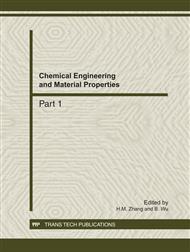p.606
p.611
p.615
p.620
p.625
p.629
p.633
p.638
p.642
HAP/UHMWPE-Coated Titanium Preparation of Biological Materials
Abstract:
Hydroxyapatite (HAP) is known as a kind of bioactive and biocompatible material, HAP coatings are used to improve the biocompatibility of substrate by some researchers. In this paper, homogenous precipitation of hydroxyapatite was formed in the system of CaNa2EDTA -(NH4)2HPO4-NH4OH-H2O, and HAP powder was obtained after calcinations at 800 and grinding. Add HAP in UHMWPE o-xylene solution to get dipping solution and prepare HAP/UHMWPE-coated titanium by dipping coating process. Scratch test demonstrated that Ti-HAP/UHMWPE material started to shine metallic luster under 1.03 N, and adhesive strength is 32MPa. UHMWPE not only simplified the process of preparing HAP-coated material, but also enhanced the adhesive strength, which shows great potential in biomedical areas.
Info:
Periodical:
Pages:
625-628
Citation:
Online since:
December 2011
Authors:
Keywords:
Price:
Сopyright:
© 2012 Trans Tech Publications Ltd. All Rights Reserved
Share:
Citation:


